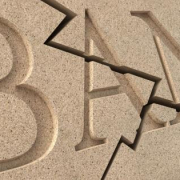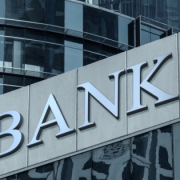Banks Expecting More Tightening On CRE Standards
The Federal Reserve’s Senior Loan Officer Opinion Survey on Bank Lending Practices (SLOOS) regularly checks with banks to better understand their lending landscape. The short take for commercial real estate from the most recent survey is that even tighter underwriting standards can be expected in the future.
And while easing interest rates are eventually expected to support relatively low demand from borrowers, that is unlikely to happen until May or June.
“Over the fourth quarter, significant net shares of banks reported tightening standards for all types of CRE loans,” the report noted. “Such tightening was more widely reported by other banks [or those with less than $50 billion in assets] than by large banks.” Tightening standards particularly by the “other banks” category were also true for multifamily loans.
“Major net shares of banks reported weaker demand for loans secured by nonfarm nonresidential and multifamily residential properties, and a significant net share of banks reported weaker demand for construction and land development loans,” they added. “Similarly, significant net shares of foreign banks reported tighter standards and weaker demand for CRE loans over the fourth quarter.”
The net percent of respondents that are tightening standards for CRE loans is a little shy of the 2020 pandemic peak and still near the 2009 apex of the Global Financial Crisis. Also, the net percent of domestic respondents reporting stronger demand for CRE loans is even worse than the depths after the GFC.
Dave Sloan, a senior economist at Continuum Economics, told Reuters that the results are “unlikely to generate any urgency for easing.” Banks expect demand for loans to increase as interest rates fall, but with signaling from the Fed, this is unlikely to happen until May or June at the earliest.
“The most frequently cited reasons for expecting to tighten lending standards over 2024, reported by major net shares of banks, included an expected deterioration in collateral values, a less favorable economic outlook, an expected deterioration in credit quality of the bank’s loan portfolio, an expected reduction in risk tolerance, an expected deterioration in the bank’s liquidity position, and increased concerns about funding costs and about the effects of legislative or regulatory changes,” explained the Fed.
More colloquially, at issue is fear on the part of banks, still around since the closuresof Signature Bank, Silicon Valley Bank, and First Republic Bank in the early part of 2023. Roughly a week after shares of New York City Bancorp — which bought most of the assets of Signature, including its CRE loan portfolio — started plummeting, they’re still in freefall. Shares went from about $10.30 or so to $4.20 at the close of Feb. 6, a drop of almost 60%.
The problems facing New York Community were more than Signature. A New York co-op loan that wasn’t in default nevertheless is now up from sale because of “a unique feature that pre-funded capital expenditures.” There was also an “additional charge-off on an office loan that went non-accrual during the third quarter, based on an updated valuation.” But they were all related to commercial real estate. And what rattles one bank rattles many more.
Source: GlobeSt.









